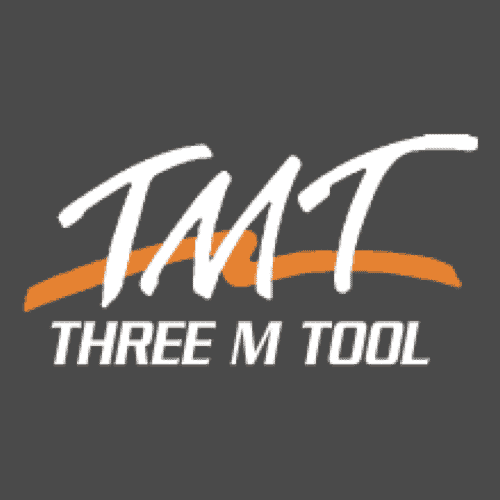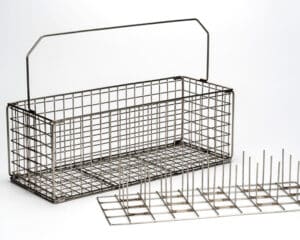How to Specify a Wire Mesh Basket for Your Ultrasonic Cleaning Application
Choosing the right basket will save time and ensure that unnecessary costs are not added to a process that is intended to be efficient and precise.
When it comes to ultrasonic cleaning, expectations are high. Whether you are using a table top system or an on the floor model, your initial equipment investment was likely significant. And, if you’re like many manufacturers, ultrasonic cleaning was selected as a means to boost production times, achieve high levels of precision cleaning, reduce manual labor (and specialized skill in cleaning hard-to-reach spots), and save money over time.
There is one thing that can foil the best laid plans: The wrong basket.
When specifying a wire mesh basket for your ultrasonic cleaning application, your selected manufacturer should be discussing three important criteria with you:
- Proper wire spacing to ensure that ultrasonic waves are not blocked from reaching and thus cleaning the parts;
- Capacity to hold the maximum number of parts without resulting in parts defects or negatively impacting quality;
- Basket material and finish to ensure that the basket will withstand both the ultrasonic waves and your selected fluid bath.
Proper Wire Spacing
The wire spacing of your basket is one of the most important considerations in basket design. Large surfaces will block ultrasonic waves resulting in parts that are not fully cleaned. This is particularly problematic for parts with hard-to-reach areas or crevices.
Ultrasonic cleaning occurs only on surfaces that are in full contact with the cleaning solution. Any obstruction caused by an improperly designed basket or by parts that are improperly stacked, will reduce effectiveness and result in having to do the cleaning process twice.
Your end product needs to be entirely free from contaminants. In some applications, such as aerospace parts manufacturing, small flecks or bits of debris that are invisible to the naked eye but remain on the part can be deadly. Only an experienced wire mesh basket manufacturer can help you determine the thickness of the wire and the spacing between the wire that will help you achieve proper cleaning while safely containing your parts.
Total Mass In The Tank
There is a limit to how much total mass an ultrasonic machine can effectively clean at one time. Loading the tank with as many parts as possible might seem like a way to boost throughput, but if the sonic generators don’t have enough power to clean that amount of mass, the cleaning cycle times will need to be longer, or the parts may not be cleaned at all.
What many manufacturers don’t realize is that the basket needs to be included in the total mass in the tank. If baskets are designed needlessly heavy, the basket dampens some of the sonic energy that could be available to clean the part.
Capacity
Baskets that are custom sized for a specific application ensure that the maximum number of parts can be positioned for cleaning, an important time-saving strategy. But, an overloaded basket risks damaging the parts, an avoidable and unnecessary cost. Products that are being cleaned may be scratched or completely ruined if they come into contact with one another during the cleaning process.
Understanding how to maximize the space within your basket can be tricky, especially if you are using a basket that came with your ultrasonic system. There are three main considerations when identifying the maximum yield in your parts cleaning basket: parts size, necessary rotation for effective cleaning, and parts protection.
Parts size: What size basket is needed based on the size and geometry of the part being cleaned? How do we factor in the size of the part with the size of the wire mesh?
Necessary rotation: Does the part being cleaned feature hard-to-reach areas such as thread roots or blind holes? If so, the parts need to be fastened properly and in such a way as to allow for rotation without parts contact or damage.
Parts protection: Based on the end use of the product, the size and shape of the product, and the material of the product, how will parts be separated (dividers, etc.)?
Many ultrasonic systems come with baskets. Do not assume that these are right for your specific needs. These are one-size-fits-all solutions and may not provide the capacity and protection that your process needs to ensure precision cleaning.
Material
It is widely accepted that ultrasonic cleaning applications require wire metal baskets as opposed to plastic. Plastic baskets absorb the sonic energy and quickly breakdown from the vibration and/or the solvents used in the cleaning process.
But, the basket material selection is not binary: metal vs. plastic. The composition of the liquid solvent also determines the proper material for your basket’s construction.
The solvent bath facilitates the ultrasonic cleaning process and the type of liquid selected correlates to the part’s end use, the environment in which the part is expected to flawlessly function, and the part’s required final surface finish.
When designing, cleaning, and finishing a part, the end use, environment, and conditions to which it is exposed are primary considerations. The same is true of the wire basket used for ultrasonic cleaning. What is the basket’s end use (size of parts, capacity, etc.)? To what conditions will the basket be subjected (chemicals, liquid solvent, etc.)? Baskets that do not use proper materials or surface finishes will break down more rapidly, contaminate the cleaning process, and result in costly delays.
Common metal alloys include Grade 304 Stainless Steel and Grade 316 Stainless Steel. Grade 304 Stainless Steel offers reliable corrosion resistance but is not ideal for higher concentration acidic or alkaline conditions. Grade 316 Stainless Steel is the preferred option for acidic, chlorinated, or similar baths. When specifying a wire basket, it is important that you work with a manufacturer who is experienced in recommending the right material for specific liquid solvents.
Wire baskets should not be an afterthought
The fact that ultrasonic cleaning equipment often comes with a wire basket gives the appearance that any basket will do the job. Remember: you selected ultrasonic cleaning for a very specific purpose, likely related to the ability to achieve a flawlessly cleaned surface. Your products are not “off the shelf.” How can a basket that is “off the shelf” meet the unique size, rotation, and air flow requirements of your unique part?
Ready to save even more time and money?
If you are using a standard basket, are experiencing parts damage or uneven surface cleaning, or if you’d like to explore ways in which to reduce time and costs associated with your ultrasonic cleaning process, engage Three M Tool for a no obligation custom basket consultation.


